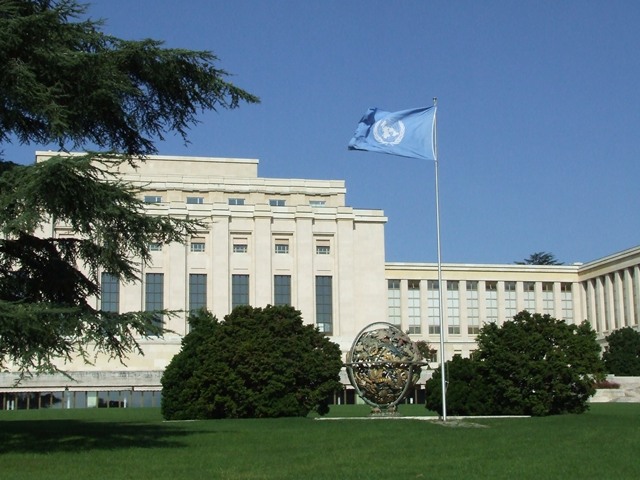With 6.7 deaths per 100,000 inhabitants, road crashes are firmly placed in the top five causes of death in Uzbekistan. Associated economic costs are estimated at 2.8% of GDP annually, states the newly released United Nations Road Safety Performance Review of Uzbekistan.
Worldwide, 1.19 million people are killed every year in road crashes, and road traffic deaths and injuries remain a major global health and development challenge. Given the rapid motorization and growing economic activity in Uzbekistan, there is a critical need to address road safety in a holistic way, by implementing targeted actions at all pillars to reduce the number of fatalities and injuries, along with the related human, social, and economic costs and the burden on the health sector.
“In the past decade, the Government of Uzbekistan has demonstrated long-term commitment to improve road safety,” said UNECE Executive Secretary Tatiana Molcean. “However, with road crashes remaining in the top five causes of death in the country, there is a clear need for a systematic improvement of the national road safety system, with a focus on the most vulnerable road users.”
The review, requested by the Government of Uzbekistan, was conducted in partnership with UNECE and United Nations Children’s Fund (UNICEF) in Uzbekistan. It provides a detailed assessment of the road safety system in the country, including the level of compliance with United Nations road safety legal instruments, and pinpoints concrete recommendations to save lives.
“Road traffic injuries cause more than 600 preventable deaths among children and youth each day globally. These deaths are largely preventable and evidence-based solutions exist,” said Geoffrey Ijumba, Deputy UNICEF Representative in Uzbekistan. “UNICEF is joining UNECE and other partners in supporting the Government to address the Road Safety Performance Review findings for Uzbekistan.”
“Road safety in Uzbekistan has never before been studied by international independent experts. UNECE and UNICEF initiated this kind of cooperation which will contribute to the improvement of the road safety system in the country,” noted Colonel Olim Saidov, Head of the Road Safety Service of the Ministry of Internal Affairs of Uzbekistan.
Placing people and safety at the core of mobility systems
In Uzbekistan, the road infrastructure has traditionally maximized mobility and economic efficiency at the expense of safety. However, given that pedestrians make up approximately 50% of road fatalities and injuries, the road infrastructure needs to change to optimize the safe movement of people, especially of vulnerable road users, such as cyclists, motorcyclists, pedestrians, children, and persons with disabilities.
In addition, with excessive speeding causing 30% of fatalities in road crashes, there is a need to adjust speed limits, particularly in urban areas. The existing general speed limit of 60 km/h in urban areas should be reduced to 50 km/h.
In that respect, the Performance Review identifies several concrete actions to ensure safer roads:
-
Separation of different road users and elimination of interaction between high-speed traffic and vulnerable road users;
-
Auditing and inspecting existing road infrastructure regularly and promoting more sustainable modes of transport, including public transport, walking and cycling;
-
Updating road design standards and developing functional classification of roads and streets, in line with the requirements of a modern, safe and sustainable transport system;
-
Implementing and enforcing effective speed management, including through modern technologies, especially in urban areas;
-
Introduction of comprehensive laws concerning the use of helmets, safety belts for rear-seat occupants and child restraint systems, as well as sanctioning drink driving;
-
Strengthening institutional and human capacity
According to the review, Uzbekistan could advance road safety management by further increasing coordination between key road safety stakeholders and strengthening institutional and human capacity at the national and local levels. Concretely, this means empowering the Republican Special Commission for Road Safety to deal with strategic issues and monitoring of results.
The Commission should be given a clear mandate, responsibilities, and authority to develop, implement, and monitor the road safety strategy and action plan, as well as the necessary resources to perform its functions effectively, including through a system for regular reporting and accountability to the Government
It is also important to develop road safety performance indicators and use them to monitor progress and evaluate the impact of enforcement efforts. For improving vertical and horizontal coordination between actions taken by designated authorities, it is necessary to create clear mechanisms among road safety stakeholders at different levels to ensure consistency and alignment of road safety policies and programmes.
The need to prioritize public transport
Too often, transport infrastructure and services in Uzbekistan fail to keep up with the mobility needs of a growing population. The lack of streets with adequate traffic capacity hinder public transport and accessibility to many urban areas.
Moreover, the lack of integration between land-use and transport policies has led to the development of new passenger car-dependent urban areas within cities and in the outskirts. Uzbekistan thus needs to prioritize public transport and active travel by developing comprehensive urban mobility strategies and plans at national and local levels to improve road safety.
Improving road safety data collection and use of new technologies
Another priority underlined in the report is the improvement of road safety data collection, analysis and dissemination. Data collection forms on road crashes should be refined based on the CADaS (Common Accident Data Set) standard and the Ministry of Internal Affairs, Ministry of Health and insurance companies’ records on road accidents should be cross- checked and stored in a single database.
In addition, the report suggests embracing new technologies for better road safety enforcement, traffic management and deployment of contemporary traffic management centres on national road networks and in urban areas to allow for better use of existing transport infrastructure and prioritize public transport. This would allow more efficient management and improve speed management.

